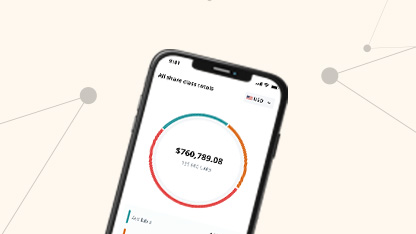The Employee Stock Ownership Plan (ESOP) concept may sound straightforward but the ESOP planning process can be a headache. So, we created a checklist to guide you from the start to implementation and on to administration to reduce time wasted on unnecessary guesswork.
Our checklist will break it down into 8 steps. So, you’ll learn how to plan, design and set it up step by step.
Skip to the relevant section below:
- Step 1: Understand ESOPs
- Step 2: Is your company qualified for ESOPs?
- Step 3: Get FREE expert advice
- Step 4: Obtain a valuation for your company shares
- Step 5: Draft & design ESOP details
- Step 6: Set up an ESOP
- Step 7: Enroll in an ESOP
- Step 8: Administer an ESOP on an ongoing basis
Step 1: Understand ESOPs
ESOP is a tax-favored employee benefit plan through which employees can become owners in their company at no cost to themselves. For business owners, their owner equity can become cash liquidity to help facilitate an exit by selling shares.
Understanding ESOPs is the first and fundamental step to help you make decisions during the ESOP design process which will be discussed later. So, let’s review the following sequence of ESOP events, or you can check out our complete guide to ESOP to learn more.
- Set up an ESOP Trust:
When you decide to sell shares to an ESOP, the first step is to set up an ESOP trust, a legal entity established for the ESOP, to hold the assets of the ESOP on behalf of the employees. - Fund the ESOP trust:
Next, you need to obtain funding for the trust. There’re different ways to do so:
In a non-leveraged ESOP, the company contributes money to the trust, or/and contributes newly issued shares (both are tax-deductible).
In a leveraged ESOP, the trust borrows money from a bank, the seller, or both. Employees pay nothing. - Consider dividends:
If the company pays dividends to the ESOP shares to either help pay down any ESOP loan or to pass through to the beneficial shareholders, these dividends would also be tax deductible. - Use the money to buy shares from owners: After using the money in point 2) to buy shares from the owner(s), the trust can start allocating shares to employee accounts.
- Allocate shares to the employee accounts via the trust
By law, shares must be distributed according to relative pay or by some formula that results in a more equal distribution. Despite being generous eligibility provisions, you can exclude certain individual employees from ESOP participation e.g. part-time employees. - Own the ESOPs after vesting
An ESOP vesting period is a timeframe that employees must wait until they own the company stock shares. When an employee completes the predefined vesting period, they are entitled to receive them. - Receive ESOP benefits at retirement
ESOP distributions can be made in lump sums or installments.
Step 2: Is your company qualified for ESOPs?
ESOPs operate successfully in a broad range of companies — large and small, public and private.
But they may not be suitable for some firms like startups and very small companies. The ideal company candidate will meet most of the following criteria.
- Does one or more major shareholders want to sell all or some of their company shares now or over the next five years?
- Does your company have greater than $1 million in revenues?
- Does your company have more than 20 employees and over $250,000 in payroll?
- Is your company profitable?
- Are your normalized pretax earnings greater than $200,000?
- Is your company a C or S corporation?
- Is your company in any industry other than professional services (doctors, dentists, lawyers)?
Note: some states allow ESOPs for professional services. Just click the button below to ask us which ones.
Step 3: Get FREE expert advice
Did you answer “yes” to most of the above questions? No matter yes or no, you now should have multiple questions about your eligibility, timeframe, costs, choosing a trustee, funding the trust and a lot more. More importantly, to set it up or not.
Let us save your time and effort to answer your questions.
Speak with our ESOP consultants who will review different options with you together to see how each option will impact the company, the selling owners and employees. Of course, we will also help you to figure out the best way to plan and manage your ESOP.
Our expert has 15 years of expertise in the formation and administration of ESOPs. As a 100% employee-owned company ourselves, Global Shares understand the complexities of the ESOP planning process. Talk to us today to save you some time and effort.
Talk to us
Step 4: Obtain a valuation for your company shares
Rough estimates of the value of the stock can be fairly accurate for public companies because the past price performance can be relied on. But, this step is crucial for private companies before setting up an ESOP because estimates will be more speculative for them.
So, companies (mainly private companies) may want to have a preliminary valuation done first by a qualified appraiser to see if the range of values produced is acceptable.
Imagine if the value is too low, you may not want to sell. Alternatively, the price of the shares may be too high to afford.
Step 5: Draft & design ESOP details
If the valuation proves positive, we can together determine the appropriate ESOP structure. The ESPP design stage begins now. There are numerous ESOP design details to consider including the basics we discussed in step 1:
Eligibility, Vesting, Participation, Share allocation formulas, Distribution, Voting rights, Multiple plan design issues and a lot more.
Step 6: Set up an ESOP
Setting up an ESOP is a process of documenting and implementing ESOP transactions. There’re multiple documents to submit including plan document, board resolutions and IRS application. We’ll be involved in this process in compliance with IRS/DOL regulatory requirements, etc.
After submitting the plan to the IRS, the IRS may take months to issue you a “letter of determination”. According to National Center for Employee Ownership (NCEO), you can start making contributions (i.e funding the ESOP trust discussed in step 1) before then. If the IRS rules unfavorably, which rarely happens, you’ll normally just need to change your plan.
Step 7: Enroll in an ESOP
Qualifications for participation are outlined in the plan document, and employers must be careful not to exclude any employees who are eligible for the plan.
Step 8: Administer an ESOP on an ongoing basis
Following implementation and enrollment, it is important to consider administration which is an important element in the ESOP planning process because proper continuous maintenance will save you time in the long run.
Don’t underestimate the workload of this part as there’ll be extensive ongoing upkeep and maintenance including:
- compliance with Department of Labor rules
- compliance with IRS rules & annual filing
- tracking the individual cost basis of each share of allocated stock
- adjusting the cost basis for forfeited stock when reallocated
- allocating stock or cash dividends on a pro-rata basis to all participants
It seems a very time-consuming process with numerous legal and compliance issues involved. That’s true. So, you don’t want to do it with a spreadsheet. The best way to save valuable time and resources in ESOP management is to have somebody else do it – a professional provider to help with planning, execution, administration, reporting, etc to ensure that you remain compliant and provide ongoing support for the plan.
We have over 15 years of expertise in the formation and administration of ESOPs. As an employee-owned company ourselves, Global Shares understand the complexities of implementing and managing an ESOP.
This publication contains general information only and J.P. Morgan Workplace Solutions is not, through this article, issuing any advice, be it legal, financial, tax-related, business-related, professional or other. J.P. Morgan Workplace Solutions’ Insights is not a substitute for professional advice and should not be used as such. J.P. Morgan Workplace Solutions does not assume any liability for reliance on the information provided herein.



